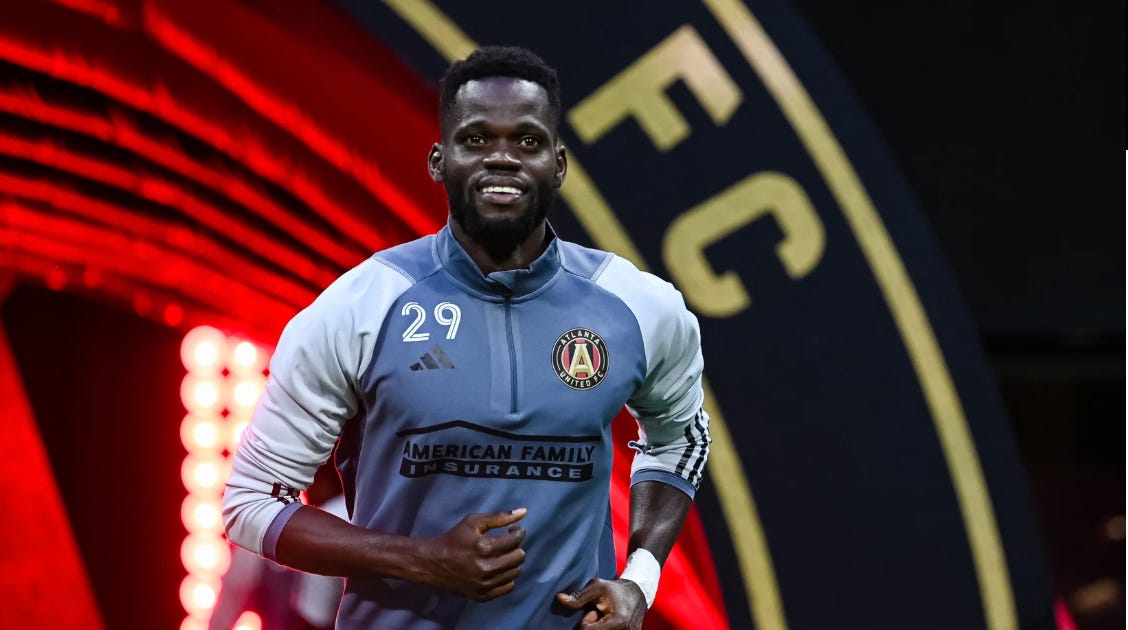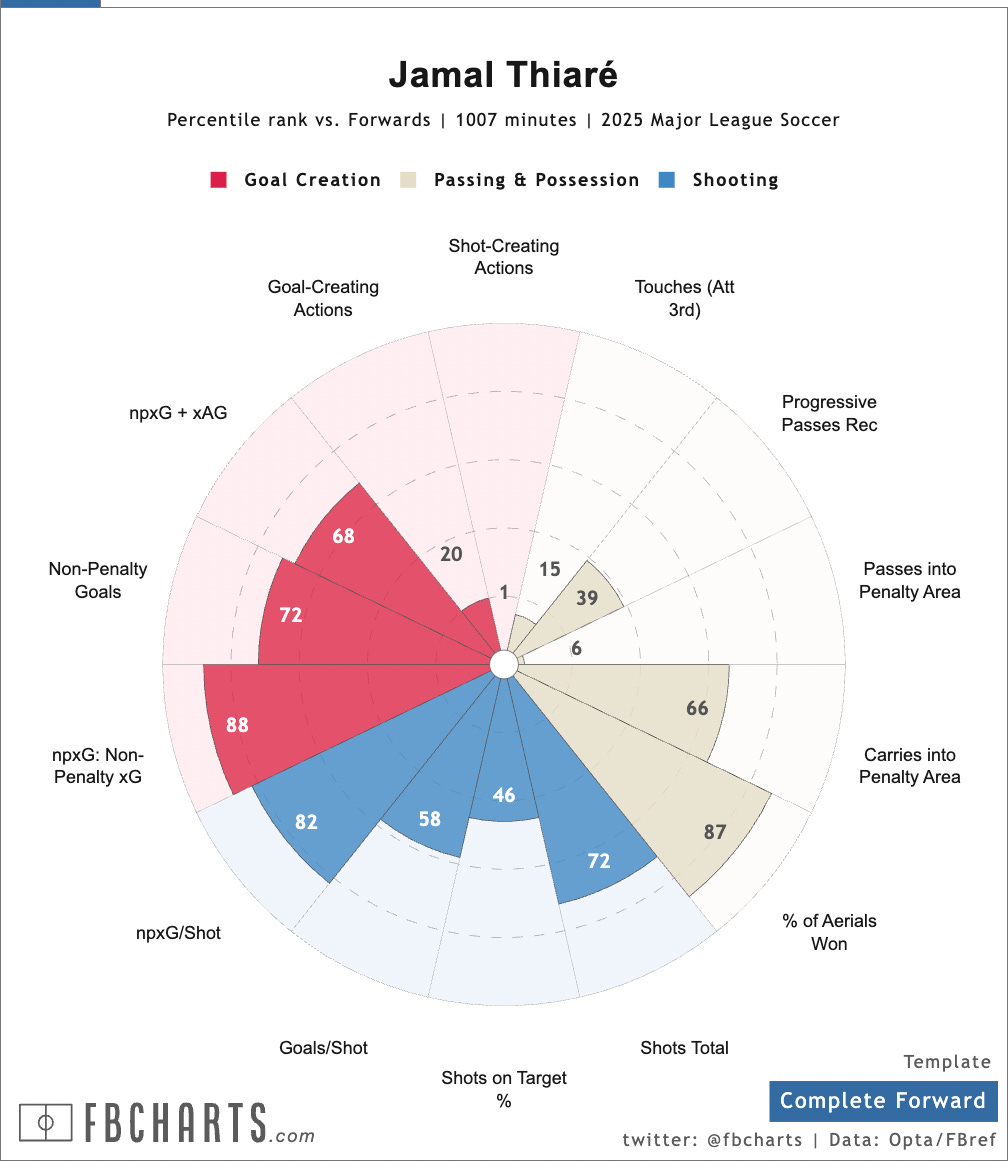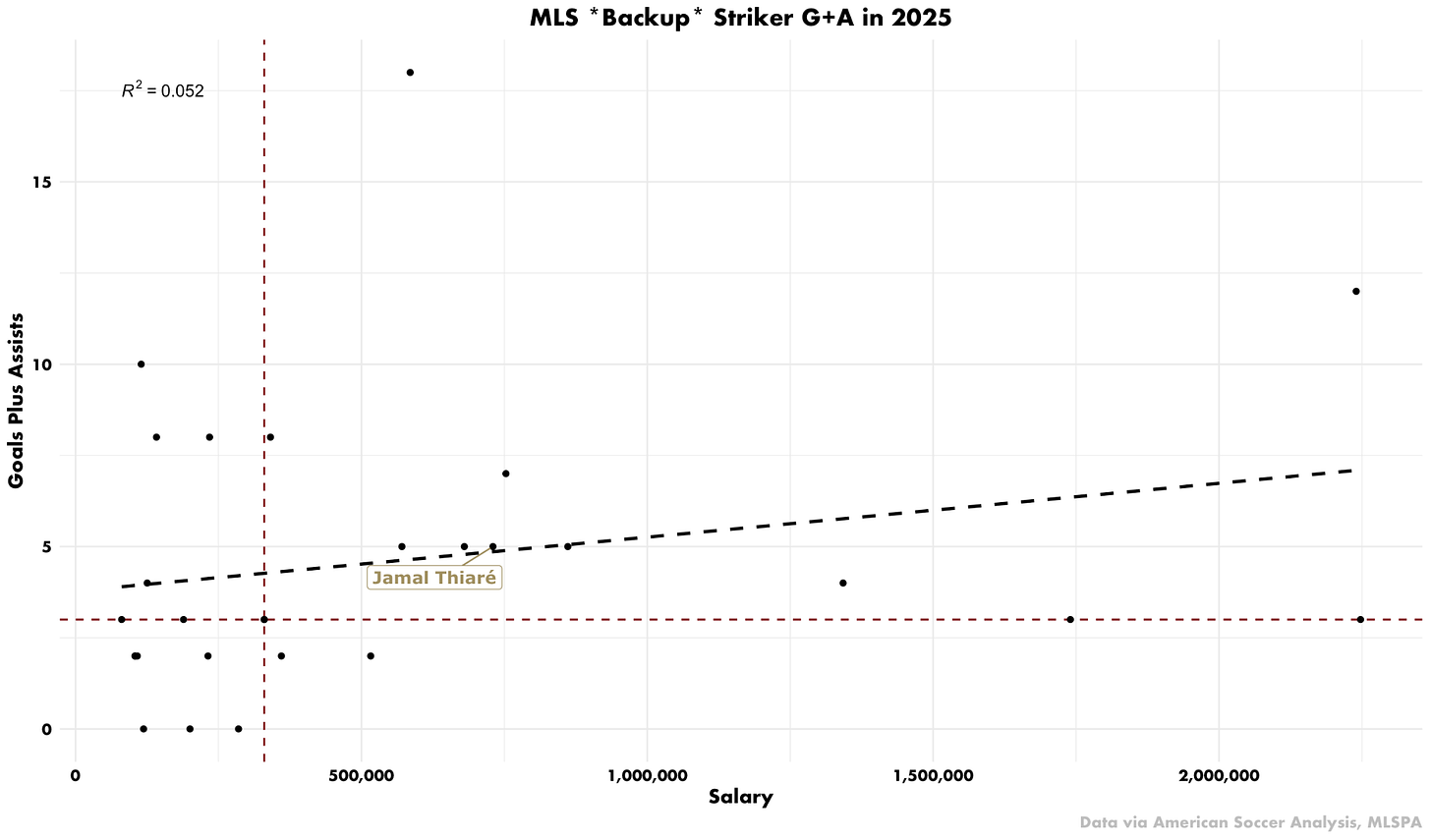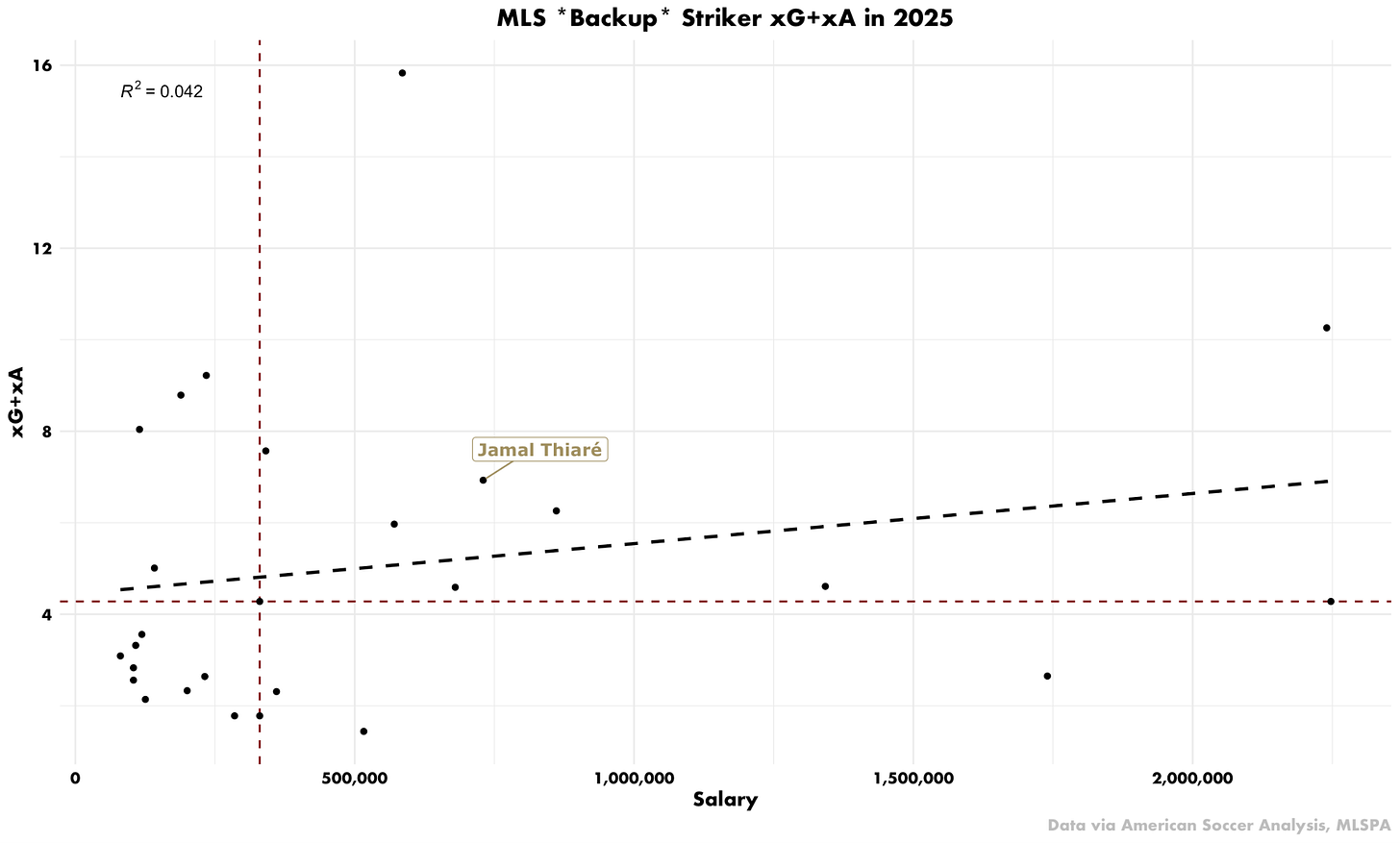Is Jamal Thiaré worth it?
He's back for one more year. Is that the right call?
via Atlanta United
When Atlanta United picked up Jamal Thiaré’s 2026 option last week, a few folks understandably bristled. Thiaré’s budget charge came in at $730k last year. It will be virtually the same in 2026* (*I asked). That’s a hefty price for a backup striker in MLS.
Based on my best calls on what constitutes a “backup” striker—a bit more on that in a second—Thiaré came in at the third-highest salary among backup strikers that were actually intended to be “backup” strikers this season. Only Orlando’s Duncan McGuire and Portland’s Kevin Kelsy earned more, and Kelsy is a U22. There are a few others making even more than them, but they’re more DPs that didn’t pan out (Giacomo Vrioni, woof) than true “backups.”
Still, Atlanta United and, now, Tata Martino, view Thiaré as worth the price. Full disclosure: After digging through the numbers on it and considering the context around Atlanta’s strikers, my view on that take landed at an annoying: “I dunno, might be.” But, maybe you can at least take solace in it not being a straight up no.
When looking at Thiaré’s value as a “backup striker,” I had to start by determining what that actually meant. It got way more complicated than I wanted. Not every team has a clear hierarchy like Atlanta. But I basically settled on looking at the players primarily listed as No. 9s who clearly played the second-most (or third-most in a two-striker system) minutes. If it involved a team like RSL that apparently played roughly five different strikers the same amount of minutes, I just bailed and included none of them. It’s more arbitrary than I would have liked, but I’ll probably get over it.
Anyway, Thiaré’s per 90 numbers in 2025 paint a picture of a singularly-minded player doing a pretty good job of what he’s being asked to do. Atlanta got practically nothing from him as a passer or dribbler and a relatively impressive small sample size output as a goalscorer and a chance finder.
Remember, this chart is looking at per 90 stats for a player who made 19 appearances as a substitute this year. The stats are going to be a bit inflated. They do seem to line up relatively well with the eye test, though. Keeping in mind our normal caveats about how being on a terrible team like 2025 Atlanta United can make a player look worse than they actually are, Thiaré stayed active, made consistent threatening runs and, oftentimes, looked a little more dangerous in Ronny Deila’s system than Latte Lath. He’s got a great physical skillset and a high motor. To me, it’s easily apparent why Tata and Atlanta feel like they can get solid performances out of him in 2026.
But that doesn’t inherently make him worth his budget charge. So, how does Thiaré’s price tag and production line up with the rest of the league’s strikers? Well, we’ve got charts. We’ve always got charts. Starting with Thiaré’s place among every first and second-string striker in the league.
Compared to the rest of the league, this is pretty middling production relative to the price tag. (Then again, compared to Latte Lath’s seven goal contributions on a $4,030,546 salary, Thiaré’s five goal contributions look like a steal.) But it’s probably not wholly fair to compare him to actual starters, so…
Unsurprisingly, he looks a little better among backups. There are definitely more valuable players—Seattle’s Danny Musovski started 16 games and scored 14 times with four assists if you’re wondering who the top left outlier is—but Thiaré’s place among his peers suggests Atlanta isn’t setting money on fire by keeping him around.
Of course, there are two important pieces of context to consider here.
Keep reading with a 7-day free trial
Subscribe to Five Stripe Final to keep reading this post and get 7 days of free access to the full post archives.







